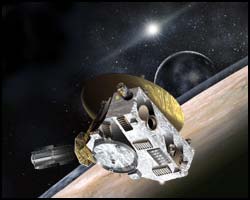This area deals with the fundamental laws and building blocks of nature and how they interact, the properties and the behavior of matter, and research into space and time and their structures.
innovations-report provides in-depth reports and articles on subjects such as astrophysics, laser technologies, nuclear, quantum, particle and solid-state physics, nanotechnologies, planetary research and findings (Mars, Venus) and developments related to the Hubble Telescope.

This release from the University of Oxford has been forwarded for your information by Peter Bond, RAS communications officer. Forwarding does not imply endorsement by the RAS.
University of Oxford Press Release
Astrophysicists from the Universities of Oxford and Rome have for the first time found evidence of ripples in the Universe’s primordial sea of neutrinos, confirming the predictions of both Big Bang theory and the Standard Model of particle physics.
Neutrinos are el

Quantum dots, tiny crystals consisting of a few hundred to a few thousand atoms, sparkle with promise for uses ranging from tagging proteins in living cells to foiling counterfeiters to enabling quantum computers. The optics and electronics of these semiconductor nanocrystals are dramatically different from the same materials in bulk. But it turns out that one of the most important electronic properties of quantum dots has been misunderstood for over a decade.
Theorists

New calculations support an alternative to “superfluidity” of a solid as the explanation for the behavior of an isotope of helium, 4He, at temperatures approaching Absolute Zero, according to a report in Physical Review Letters.
Among the most provocative recent reports in condensed materials science were studies interpreting the behavior of solid 4He in an oscillating chamber as a “supersolid.” In this current paper, John S. Wettlaufer, professor of geophysics andphysics at Y

APL-Built Pluto Mission Spacecraft Shipped to NASA Goddard for Pre-launch Tests
The first spacecraft designed to study Pluto, the solar system’s farthest planet, took the first steps on a long journey today when it was shipped from the Johns Hopkins University Applied Physics Laboratory (APL) in Laurel, Md. — where it was designed and built — to NASA’s Goddard Space Flight Center in Greenbelt, Md., for its next round of pre-launch tests.
Proposed for launch in Januar

By depositing nanoparticles onto a charged surface, researchers at the University of Illinois at Urbana-Champaign have crafted nanotubes from silicon that are flexible and nearly as soft as rubber.
“Resembling miniature scrolls, the nanotubes could prove useful as catalysts, guided laser cavities and nanorobots,” said Sahraoui Chaieb, a professor of mechanical and industrial engineering at Illinois and a researcher at the Beckman Institute for Advanced Science and Technology.

’Martian bread and green tomato jam’, ’Spirulina gnocchis’ and ’Potato and tomato mille-feuilles’ are three delicious recipes that two French companies have created for ESA and future space explorers to Mars and other planets.
The challenge for the chefs was to offer astronauts well-flavoured food, made with only a few ingredients that could be grown on Mars. The result was 11 tasty recipes that could be used on future ESA long-duration space missions. ADF – Alain Ducasse Forma